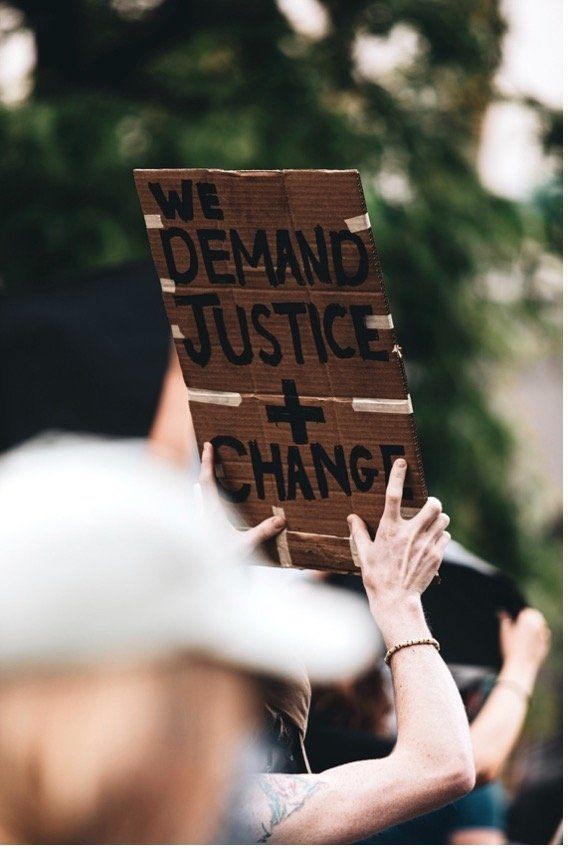2022 TOP 10 BLOG
Tracking the Biden Administration’s Whole-of-Government Approach to Equity and Environmental Justice
VJEL Staff Editor: Zachary Handelman
Faculty Member: Amy Laura Cahn

In his first week in office, President Biden issued several executive orders directed at undoing the Trump Administration’s environmental policies and ensuring that federal decisions advance equity, civil rights, racial justice, and equal opportunities for all. One order, E.O. 13985, creates the first federal whole-of-government equity agenda and directs federal agencies to implement equity concerns into their administrative actions. Another order, E.O. 14008, outlines a government-wide plan to tackle the climate crisis. These two orders aim to fundamentally transform the federal government’s approach to equity and environmental justice. This whole-of-government approach includes directing an unprecedented number of resources towards communities subject to historic neglect, disinvestment, and discrimination by the government and private entities. Given the interconnectedness of equity and environmental justice, these two orders will likely have an overlapping impact on federal agencies, particularly the Environmental Protection Agency (EPA) and the U.S. Department of Agriculture (USDA). It will be essential to monitor how these agencies and the White House coordinate and implement their ambitious mandates heading into year two of the Biden Administration.
Overview of Executive Orders 13985 and 14008
E.O. 13985 directs federal agencies to review their programs and policies to determine whether they perpetuate systemic barriers to underserved communities. The E.O. mandates the advancement of equity for “People of Color and others who have been historically underserved, marginalized, and adversely affected by persistent poverty and inequality.” By January 20, 2022, each agency must complete a plan to address the systemic barriers to these affected communities. This planning process shall involve meaningful consultation and engagement with members of those communities. Ultimately, this January 20 deadline will reveal the concrete policy and program changes that each agency will take to advance equity for People of Color and other underserved communities.
E.O. 14008 addresses a broad range of climate policies and initiatives with a focus on environmental justice. This order amends the Clinton era E.O. 12898 (Federal Actions To Address Environmental Justice in Minority Populations and Low-Income Populations). E.O. 12898 was widely recognized at the time for bringing attention to the environmental justice movement. However, it has since been criticized by Environmental Justice advocates for its lack of substantive requirements and enforcement by federal agencies. E.O. 14008 revises E.O. 12898 to establish environmental justice performance metrics and annual performance scorecards. These revisions are intended to hold agencies accountable for meeting the goals and requirements of Biden’s executive orders.
E.O. 14008 also created two important government initiatives: Justice40 and the Climate and Economic Justice Screening Tool. The Justice40 initiative directs 40% of federal investments to flow to disadvantaged communities. The Climate and Economic Justice Screening Tool will be a geospatial map that identifies and highlights disadvantaged communities to support the allocation of federal funds to these communities. Taken together, Executive Orders 13985 and 14008 address important, overlapping issues facing People of Color and other underserved communities. They set ambitious goals that will require serious investment, but still leave a lot of unanswered questions for agencies and the public.
Equity and Environmental Justice in the USDA and EPA
It will be important to monitor how the EPA and USDA implement their mandates under Executive Orders 13985 and 14008. These two agencies have particularly complex histories with racism and discrimination. BIPOC (Black, Indigenous, and People of Color) farmers have long received a significantly lower share of USDA benefits and services than white farmers, while disproportionately suffering from the adverse environmental health impacts of the agriculture industry. Meanwhile, BIPOC neighborhoods have long borne the brunt of disproportionate environmental burdens, unprotected by existing environmental laws. For decades, EPA has failed to comply with its duties under Title VI of the Civil Rights Act and E.O. 12898 by persistently declining to investigate complaints of civil-rights violations in communities of color.
Climate change will only exacerbate the challenges facing underserved communities. Whether these two agencies can rewrite these narratives, while addressing the need for climate action, will require a systematic transformation that endures long after the Biden Administration. While Biden’s executive orders set the stage for this kind of shift, it will be up to each agency to assess their unique needs, goals, and capabilities.
Federal agencies have taken different approaches to address equity and systemic barriers under E.O. 13985. In June of 2021, the USDA issued a more general Request for Information (RFI) for public input on advancing racial justice and equity within the agency. The RFI indicates that the USDA is establishing a Racial Equity Commission to gather public input and identify barriers that People of Color face in accessing USDA programs. On October 7, 2021, USDA published a fact sheet listing its equity accomplishments since the inception of Biden’s executive orders. This list includes multiple initiatives to use COVID-19 relief funds to support socially disadvantaged farmworkers.
However, some of USDA’s efforts might be impacted by a legal grey area regarding agency actions that provide aid to socially disadvantaged groups. In February 2021, Congress passed the Emergency Relief for Farmers of Color Act which directed USDA to forgive the debts of socially disadvantaged farmers—defined as having been “subjected to racial or ethnic prejudice.” The law currently faces 13 lawsuits by white farmers across the country challenging the law as relying on a race-based classification. The lawsuits will determine the future of this monumental piece of legislation, and the USDA will have to wait to administer the program’s funds until the courts resolve the lawsuits. Because race is such an essential factor in equity and environmental justice issues, the lawsuits may have ramifications beyond this one USDA program. Any actions taken pursuant to Executive Orders 13985 and 14008 may be subject to similar constitutional challenges. The USDA still has a long way to go to remedy the effects of past discrimination and 2022 should provide more guidance on how the agency intends to integrate equity and environmental justice into its programs and policies.
The EPA has more experience in administering environmental justice initiatives due to its central role in administering E.O. 12898, but has still struggled to integrate environmental justice across the agency and government. Moreover, under the Trump administration, the EPA was severely curtailed by budget cuts, internal politics, and efforts to undermine environmental justice initiatives. With this backdrop in mind, it will be important to monitor EPA’s progress on these issues during the Biden Administration.
Since January, EPA has stepped up its initiatives related to equity and environmental justice. EPA continues to roll back Trump era rules and regulations, while promulgating new regulations to address PFAS and other toxic pollutants and directing funds to environmental justice communities. The agency also recently concluded a public comment period on its FY 2022-2026 Strategic Plan. This plan includes several performance goals and strategies related to advancing environmental justice and civil rights. Most recently, EPA Administrator Regan completed a week-long “Journey to Justice” tour to hear firsthand from residents of historically marginalized communities in Mississippi, Louisiana, and Texas.
EPA and USDA’s complicated histories with environmental justice leave many questions yet to be answered. Given the expansive reach of E.O. 13985, how will EPA and USDA determine which communities fall under the definitions of underserved and disadvantaged communities? How will current litigation impact strong action on equity? Will the actions of the prior administration affect the agencies’ abilities to address these issues before the next election? Answers to these questions should become clearer in January once the EPA, USDA, and other agencies publish their racial equity plans under E.O. 13985.
Looking Forward for 2022
2021 began by welcoming a new presidential administration to the White House. This change in administration may be looked back on as ushering in a new era of federal action on climate and equity. President Biden’s executive orders set the stage for a whole-of-government approach to addressing the needs of underserved and overburdened communities. 2022 will be even more important, as agencies are directed to begin implementing programs and policies according to these executive orders. At this time, many questions remain to be answered. Will agency actions which factor historic racial discrimination be subject to constitutional constraints? Will agencies have sufficient enforcement authority and resources to enact their programs and policies? Will People of Color and other underserved communities have the power and opportunity to shape how policy impacts their lived experiences? This coming year will provide the public with a better understanding of how effective the federal government will be at addressing equity and environmental justice under the Biden administration.

